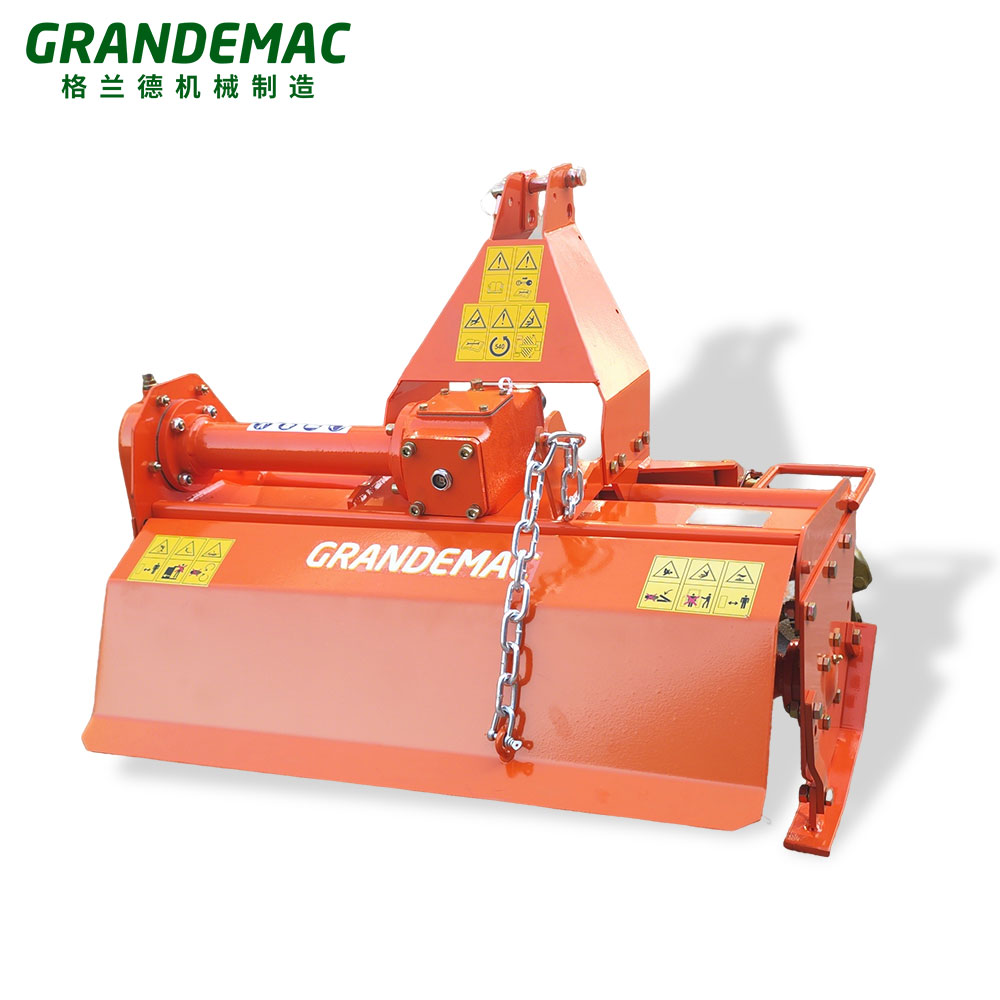close
Choose Your Site
Global
Social Media
Views: 0 Author: Site Editor Publish Time: 2025-06-12 Origin: Site











The Rotary Cultivator has revolutionized modern agriculture by enhancing soil preparation efficiency. Understanding its operation is crucial for maximizing crop yields and maintaining sustainable farming practices. This article delves into the methodologies of using a rotary cultivator effectively, providing insights backed by research and field applications.
A rotary cultivator is an agricultural implement equipped with rotating blades designed to work the soil by breaking up clods, mixing organic matter, and preparing a fine tilth for planting. It operates by mechanically agitating the soil, which enhances aeration and promotes healthy root growth. The efficiency of a rotary cultivator depends on its correct usage and the operator's understanding of its mechanical components.
The main components include the knife drum, blades or tines, transmission system, and depth adjustment mechanisms. The knife drum rotates, powered by the tractor's power take-off (PTO), engaging the blades with the soil. Depth adjustments allow for varying tillage depths, catering to different crop requirements and soil conditions.
 Proper preparation ensures the rotary cultivator operates efficiently and safely.
Proper preparation ensures the rotary cultivator operates efficiently and safely.
Begin by thoroughly inspecting the cultivator for any signs of wear or damage. Check the blades for sharpness and integrity, ensuring they are securely attached. The transmission components should be lubricated according to the manufacturer's specifications to prevent mechanical failures during operation.
Set the desired tillage depth by adjusting the skids or rear cage roller. The depth setting depends on the crop type and soil condition; common depths range from 2 to 6 inches. Calibrate the rotational speed of the knife drum to match the forward speed of the tractor, optimizing soil pulverization without overworking the machinery.
Effective operation involves synchronizing tractor speed, blade rotation, and maintaining consistent patterns across the field.
Engage the PTO at low engine RPM to prevent sudden stress on the driveline components. Once the PTO is engaged, gradually increase the engine speed to reach the optimal blade rotational speed as recommended for your specific Rotary Cultivator model.
Plan the field cultivation pattern to ensure full coverage without redundant passes. Overlapping slightly on each pass prevents unworked strips between rows. Be mindful of turning at the end of each row to avoid scalping or creating uneven soil surfaces.
Soil moisture content significantly affects tillage quality. Operate when the soil is moist but not wet to prevent compaction and clod formation. Adjust the tractor's forward speed and the cultivator's rotational speed based on soil texture; slower speeds for heavy clay soils and faster for sandy soils.
Safety is paramount when operating heavy machinery.
Wear appropriate PPE, including sturdy footwear, gloves, and eye protection. Loose clothing should be avoided to prevent entanglement with moving parts.
Ensure all safety guards and shields are in place, especially around the PTO shaft and blades. Regularly check these components during operation breaks for any signs of damage or loosening.
Proper shutdown and maintenance extend the life of the rotary cultivator.
Disengage the PTO before throttling down the engine to idle. Allow the blades to come to a complete stop before leaving the tractor seat. This practice prevents accidents caused by residual blade movement.
Remove soil and debris from the blades and frame to prevent corrosion. Inspect the blades for wear and replace them if necessary. Lubricate moving parts as per the maintenance schedule to ensure optimal performance for future operations.
For experienced operators, advanced methods can enhance efficiency.
Adjusting tillage depth within the same field can be beneficial. Deeper tilling in compacted areas alleviates soil hardpan, while shallower passes preserve soil structure in less compacted zones. Utilize soil maps and compaction data to inform these adjustments.
Incorporate crop residue effectively by adjusting the blade speed and forward motion to ensure residue is mixed thoroughly with the soil. This practice enhances organic matter content and promotes beneficial microbial activity.
Operators may encounter challenges that require prompt attention.
Excessive vibration or unusual noises may indicate damaged blades or imbalanced drums. Stop operation immediately to inspect and rectify the issue, preventing further equipment damage or safety hazards.
If the soil is not reaching the desired fineness, adjust the blade speed or slow down the tractor's forward motion. Verify that the blades are sharp and appropriate for the soil type. In some cases, multiple passes may be necessary.
Technological advancements have led to more efficient and user-friendly rotary cultivators.
Modern cultivators may feature hydraulic motors for blade rotation, allowing for adjustable speeds independent of the tractor's PTO. This innovation offers greater control and adaptability to varying field conditions.
Some models incorporate sensors to monitor soil conditions and adjust operations in real-time. This technology enhances efficiency and ensures optimal soil preparation, aligning with precision agriculture practices.
Using a rotary cultivator responsibly minimizes environmental impact.
Avoid over-tilling, which can lead to soil erosion and degradation of soil structure. Implementing conservation tillage practices preserves soil health and promotes sustainable agriculture.
Efficient operation reduces fuel consumption. Maintaining optimal blade sharpness and equipment condition lowers the power required for tillage, contributing to lower operational costs and reduced emissions.
Mastering the use of a Rotary Cultivator enhances farm productivity and promotes sustainable soil management. By adhering to proper operational procedures, maintenance practices, and staying informed about technological advancements, operators can optimize their cultivation processes. The rotary cultivator remains an indispensable tool in modern agriculture, and its effective use is integral to achieving high crop yields and maintaining soil health.